What natural disaster are you most likely to face on a yearly basis? Is it a San Andreas-style earthquake? A tsunami? A tornado?
Nope.
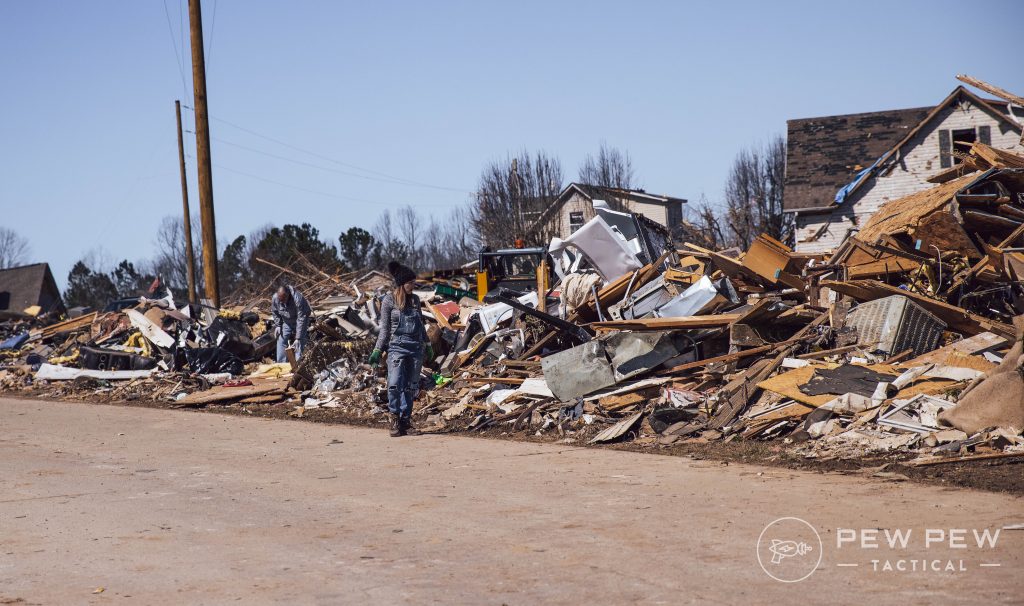
The most common natural disaster in the United States of America is…floods.
Though it may seem more mundane than other survivalist things — it has none of the pizzaz that accompanies an alien invasion — a flood is no laughing matter.

Set aside the threat of serious property damage, we’re also talking about the potential for drownings, landslides, long-term power outages, and significant disease spread during the aftermath.
A little bit of knowledge here though, can save you a lot of trouble, and potentially even your life. So, what does it take to survive a flood?
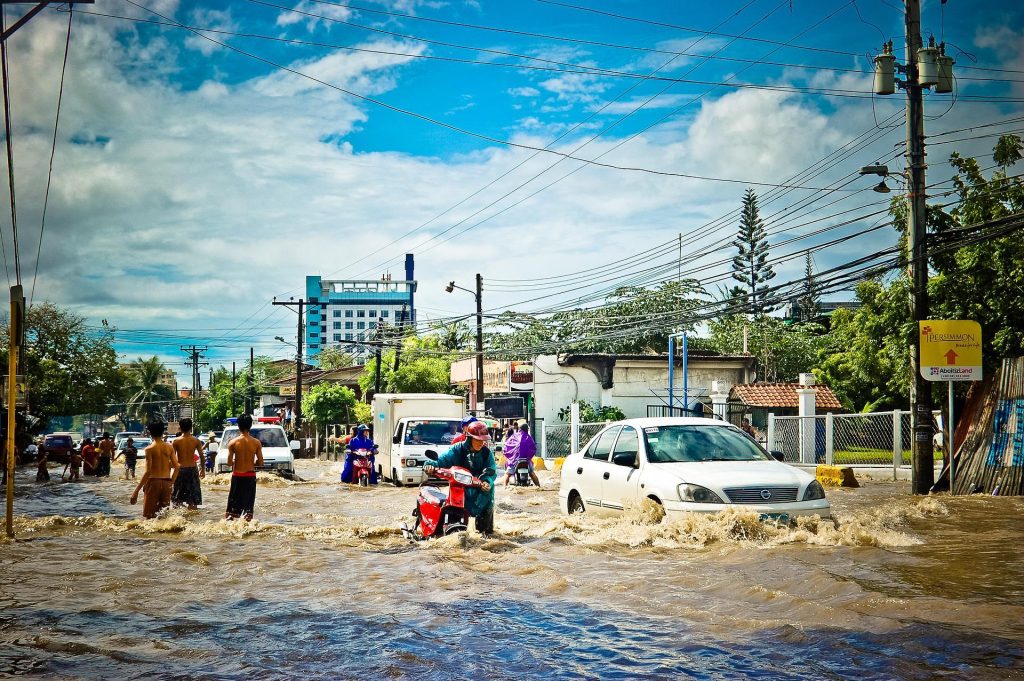
Keep reading as we walk you through how to deal with floods and, most importantly, how to stay alive!
Table of Contents
Loading…
How to Prep for Floods Before They Happen
Thankfully, as with most disasters, there are steps you can take well ahead of time to improve your survivability.
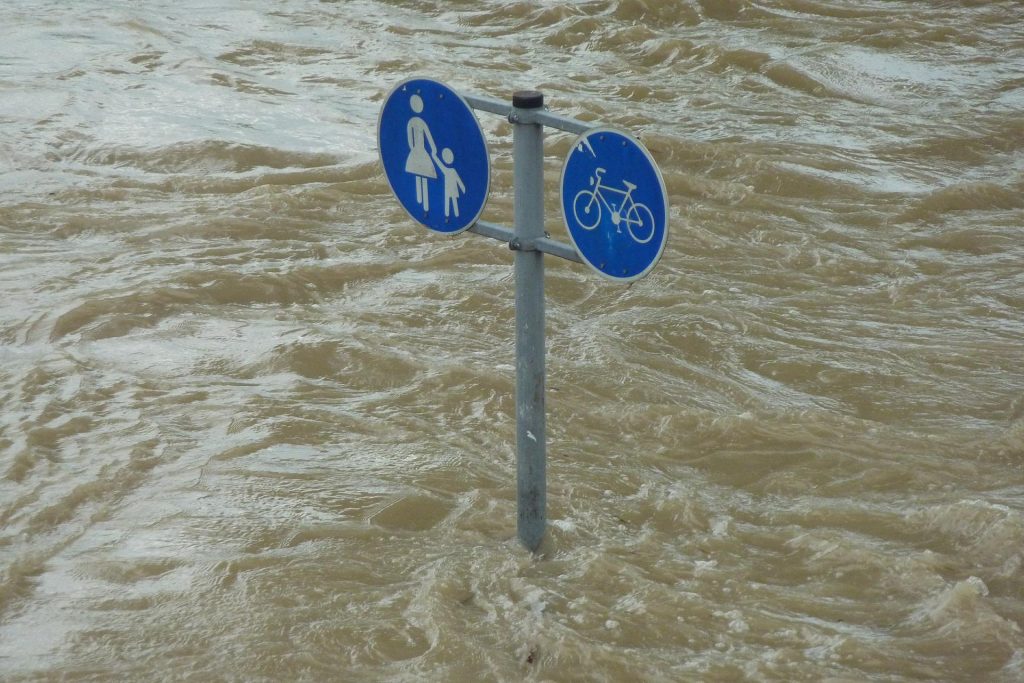
So let’s look at a few ways to prep before waters rise…
Start Monitoring Local Weather Patterns
First up, start monitoring local weather patterns.
This is easily done by listening to your local country music station. But if you’re looking for something a bit more ornate, I recommend a dedicated NOAA weather radio.
-
25% off all OAKLEY products - OAKLEY25
Copied! Visit Merchant
The NOAA puts out constant up-to-date weather forecasts for your region, giving you a heads up about what crazy weather patterns are headed your way.
This forewarning can make all the difference in whether or not you’re caught off guard by a flash flood.
Build a Bug Out Bag
Build yourself a bug out bag as well. (Need some tips….we got lots of suggestions in our Ultimate Guide to Bug Out Bags.)
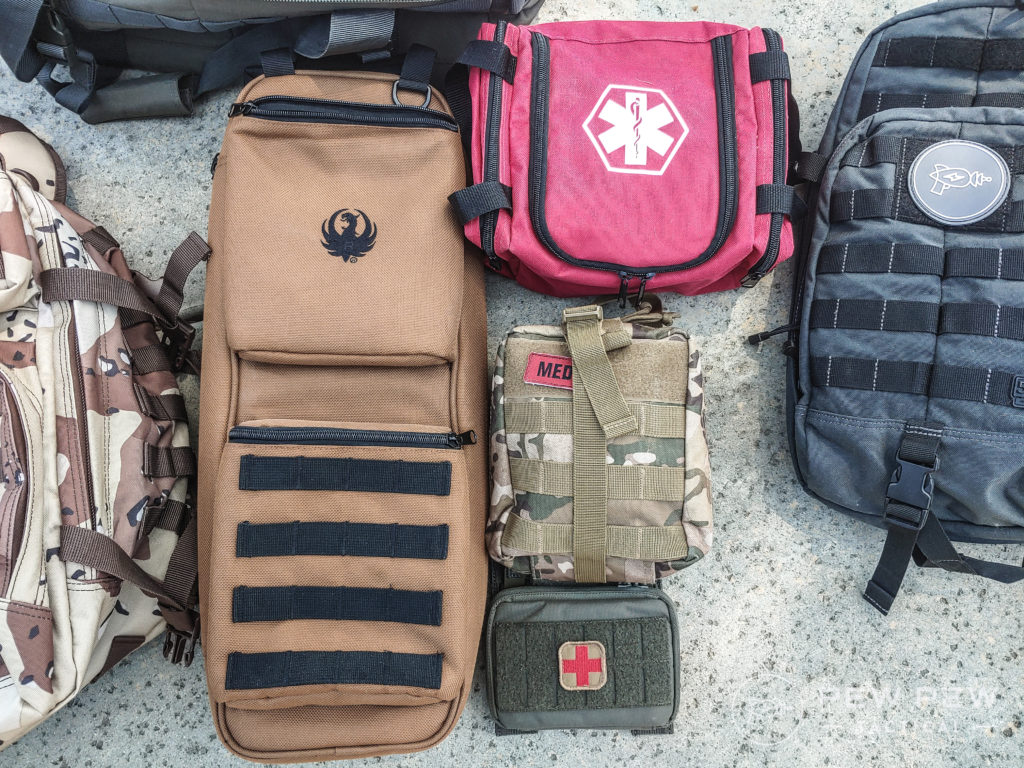
Should things get bad in your area and you need to evacuate, you can easily throw a bug out bag with the essentials in your car and get the heck out of there.
The longer you wait, the worse your chances become of getting out in one piece.
Store Extra Food, Water, & Other Gear
In short, I’m telling you to do some prepping. You don’t know what’s headed your way with a flood, but it’s best to be prepared.
Should all exits be blocked off, bridges washed out, power goes down, local pharmacies get swept away, do you have what you need to survive?
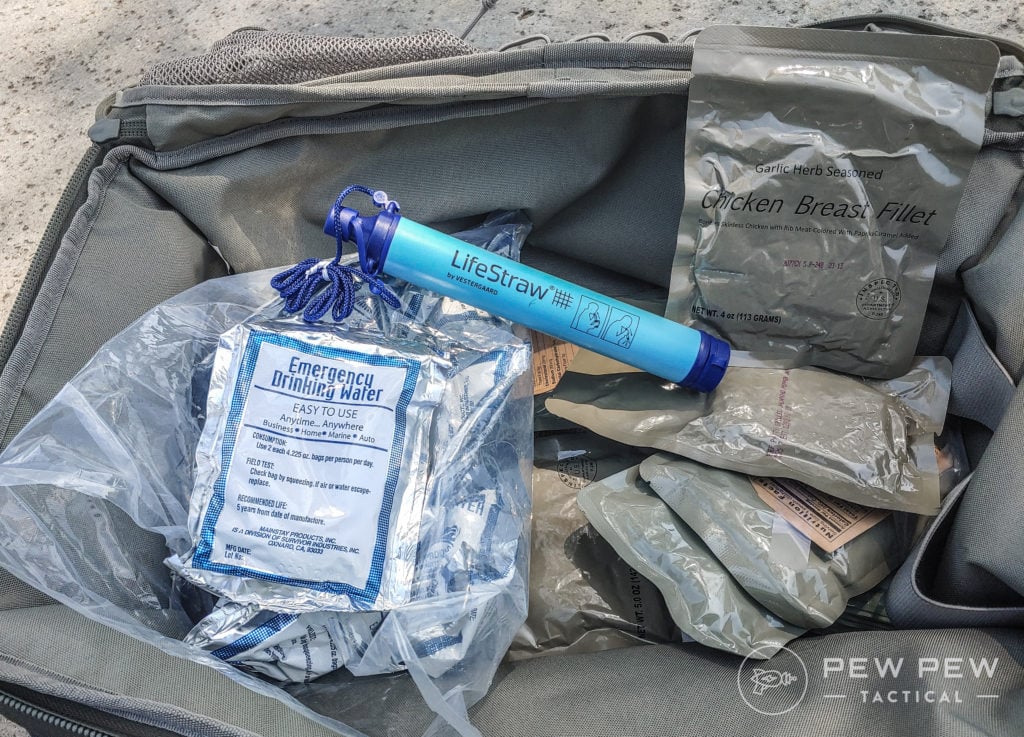
Can you remain self-sufficient and independent for at least a week?
I think it’s wise to be prepared for much longer than that, but we all have to start somewhere, and a week is a good place to do so.
What if you’re on a budget and can’t spring for all the supplies it takes? No worries, we cover that in our guide to Budget Prepping.
Protecting Against Flood-Related Property Damage
It only takes one inch of floodwater to cause up to $25,000 in damage.
Worse yet, a lot of people just assume that their insurance covers them for such events. It’s only later they realize the majority of home insurance policies don’t cover flood damage.
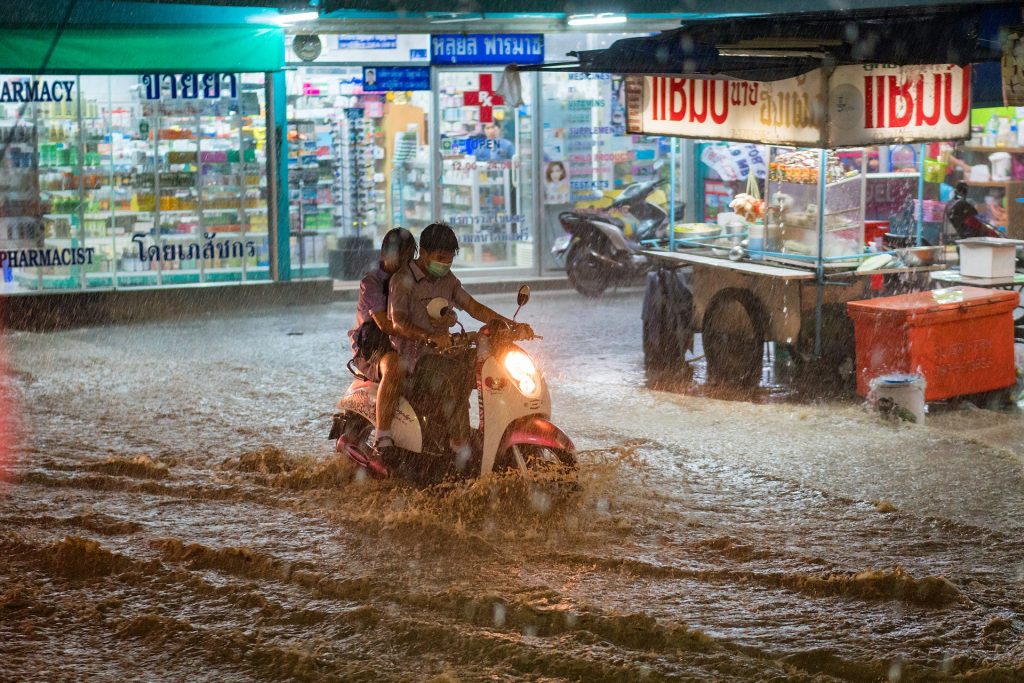
If you’re a homeowner, that’s a logistical nightmare.
Aside from being heckled by insurance companies, you now have contractors to call, Lowe’s trips to make, and a number of sky-high bills. I’ve been there. It’s no fun.
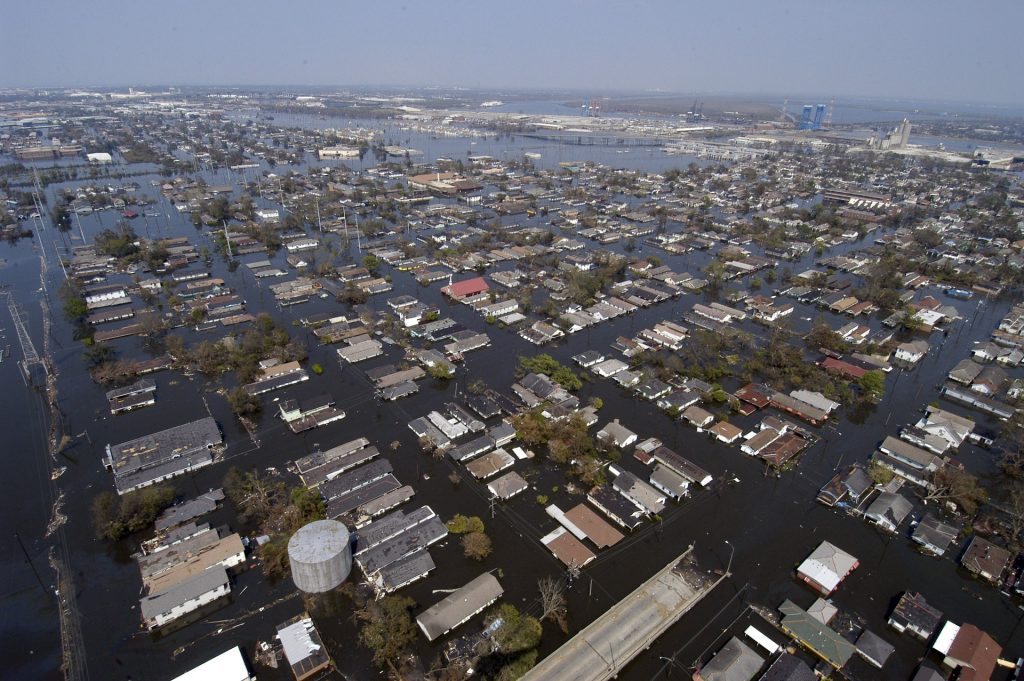
So here is what you should do to protect your property from flood damage…
Find Out if You’re in a Flood-Prone Area
If you’ve lived in an area for a while, you likely already know the answer to this.
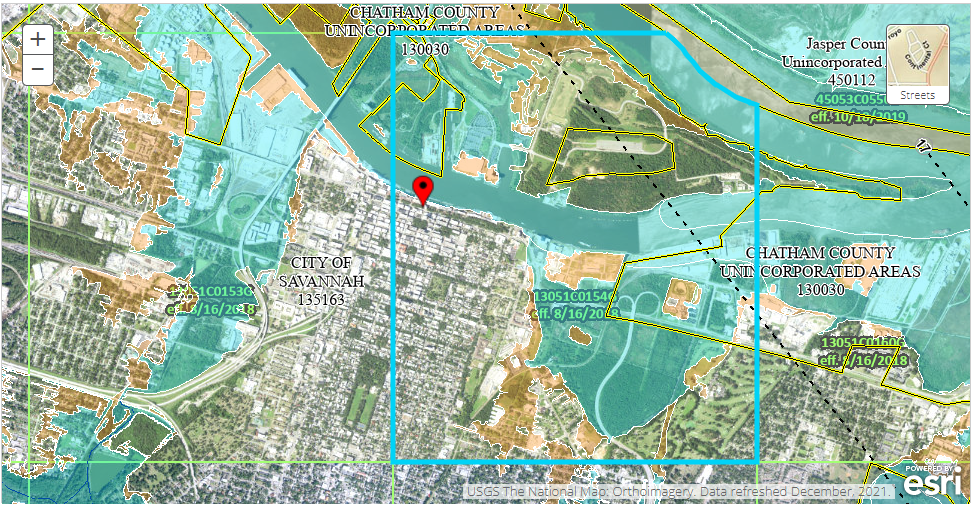
If not, I highly recommend checking out FEMA’s interactive flood map. It’ll tell you exactly what you need to know — especially if you’re in the home buying phase. Best to learn that before!
2. Buy Flood Insurance
If you live at the top of a mountain, you probably don’t have to worry about this.
But if you live next to a river, I highly recommend purchasing a flood policy pronto.
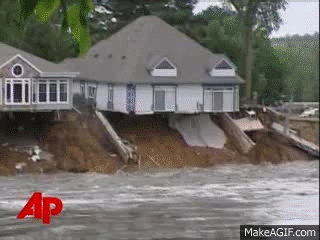
When it does flood (and it eventually will), you’ll have the peace of mind that comes from knowing you’ll have some degree of financial protection.
3. Invest in Water Barriers
If you live in an area that regularly floods, you may want to invest in some sort of barrier.
-
25% off all OAKLEY products - OAKLEY25
Copied! Visit Merchant
Sandbags and Quick Dam may not help save your life, but they’ll most certainly save you a lot of mess and financial trauma due to property damage.
If you really want to step up your game here, though, check out the AquaDam. It’s extreme, but it’s easily one of the coolest pieces of equipment out there in the flood-prevention field.
What to Do When It Floods
Alright, so the rain is still falling, and you can visibly see the water outside rising higher. What do you do now?
On Foot
You need to find shelter, and you need to find it fast. This will not only protect you from the elements, but if there’s a flash flood on the way, it’ll keep you from getting swept away as well.
Ideally, find a structure with multiple stories. This will give you extra leeway to escape should the waters rise drastically.

Don’t be tempted to try to walk through this rushing water. It only takes 6 inches of water to knock you off your feet.
Once you’re down, it’s that much easier to get swept away and drown.
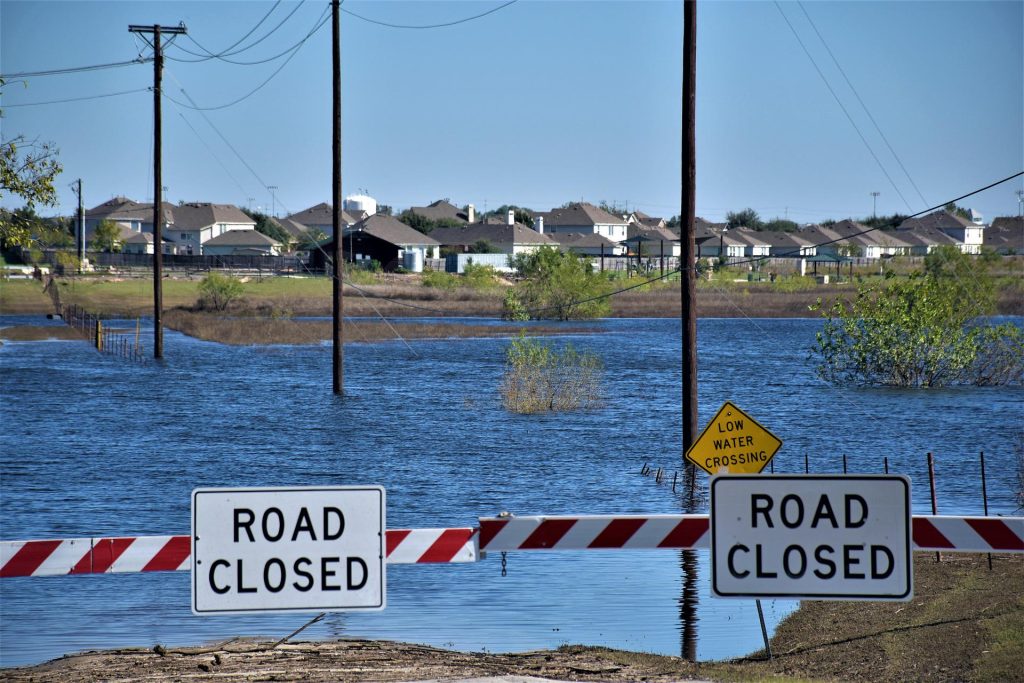
Avoid bridges over fast-moving water as well. If a sudden influx upstream heads your way, that bridge may very well get washed away or be overrun by the water.
Either way, you’ll quickly find yourself in a deadly situation.
At Home
The first thing you want to do is put up any water barriers. If that’s not a viable alternative and you know it (e.g. too much water), then head for the highest level within your home.
But don’t camp out in a closed attic!

If the water rises up to that point, you’ll quickly become trapped. When that happens, drowning, baking in attic heat, or starvation are all potential outcomes.
In the Car
Given that 1-in-10 people who drown do so in a car and that more than 50% of flood-related deaths happen in a vehicle, it makes sense to know what to do to survive a flood in your Buick.
The number one thing you need to know here is this…don’t drive in flood water.
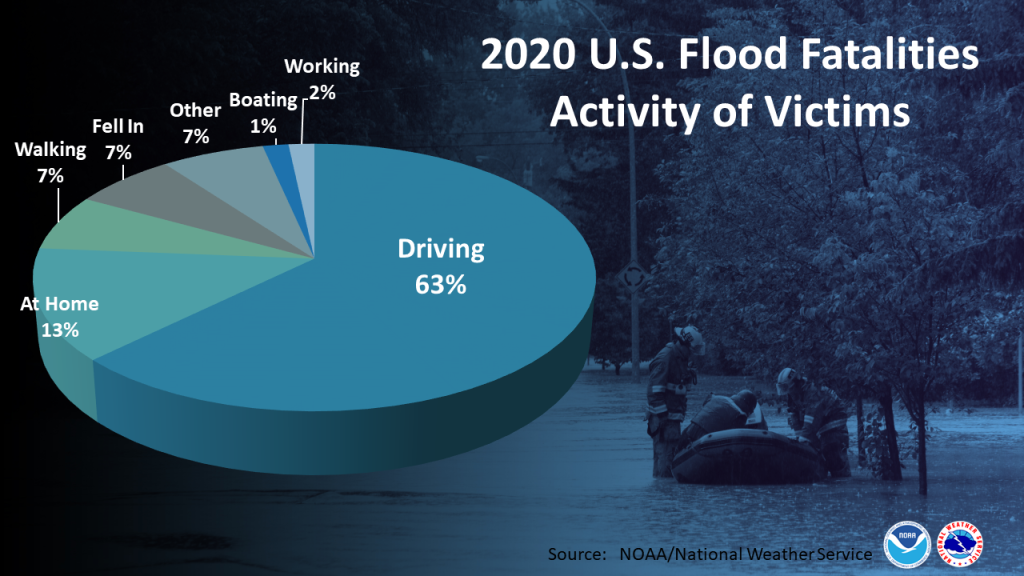
If you can remember that one tip, you’ll greatly increase your chances of survival.
It only takes a foot of water to lift most cars up and downstream. Even if you drive a jacked-up truck or SUV you still run the risk of your vehicle floating.
What to Do If You’re Swept Away in a Flood
You’re out camping when a sudden wall of water rounds the bend, does its best Disney prince impression and sweeps you off your feet.

This is the reality of flash floods. They’ll hit without warning, quickly washing you away if you’re not careful.
So here’s what to do if that happens…
Lay back in the water with your feet pointed downstream. This lets you see what’s coming, helps save your energy, protects your head, and will help keep you from being pinned.
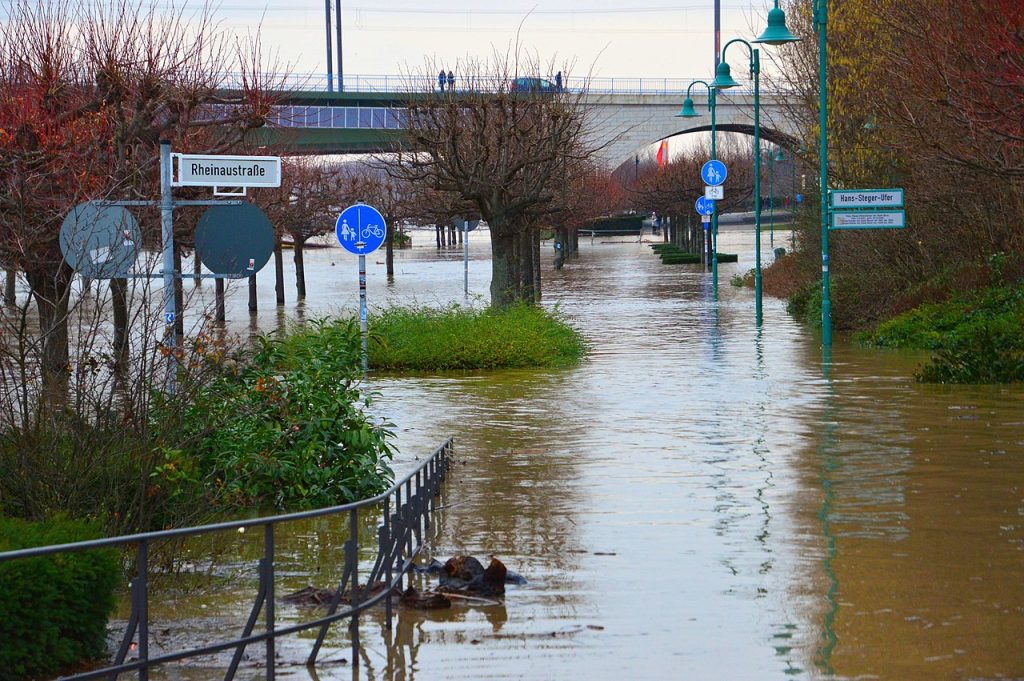
You cannot win in a fight against the power of floodwater. Let the current carry you where it wants to, but when the opportunity presents itself to reach land, take it.
According to Jim Napolitano — a former Secret Service agent on the water protection detail — the key to getting out of floodwater once you get near land is to roll like a fat, blubbery seal.

So do your best seal impression and roll!
My Car Is Sinking in Water: What Do I Do?
First off…don’t drive through water. Just don’t. You don’t know how deep it is, and you can’t anticipate if more water is inbound.
Remember, it doesn’t take much to lift a car.
But let’s say you somehow find yourself sitting behind the wheel of a car and the water is coming up fast. Here’s what to do…
What do you do now?
For starters, get out as soon as possible.
Depending on your car, you have somewhere between 30-60 seconds of what is called the “floating period.” That’s the time window until the water gets up to the bottom of your windows.
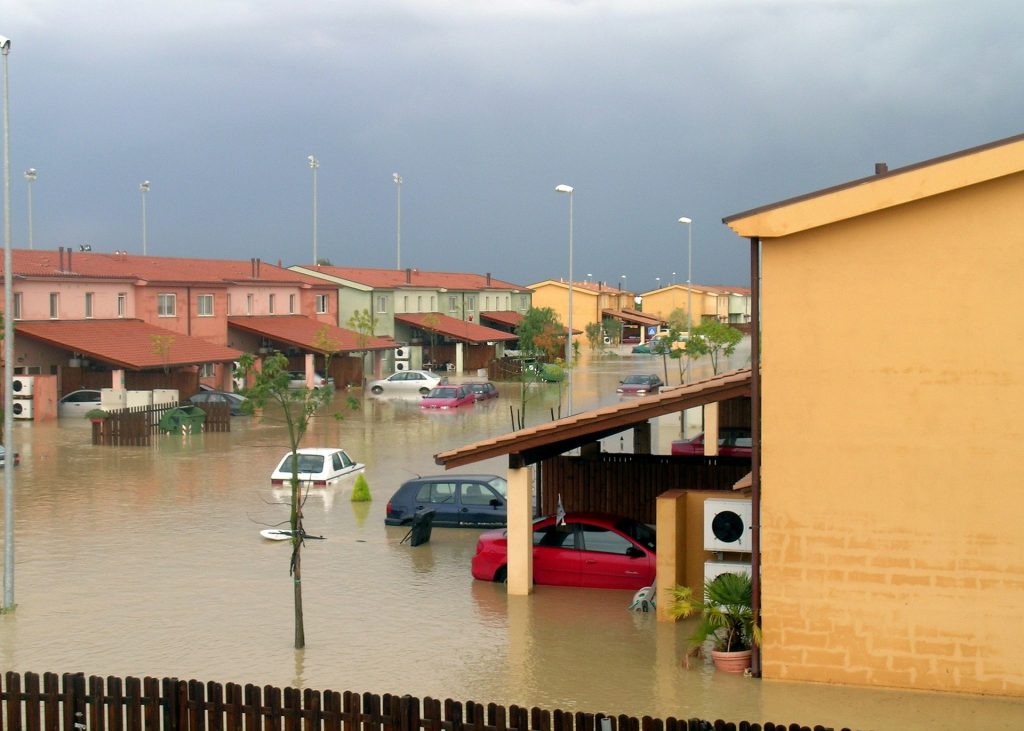
Once that point is reached, the car will quickly become submerged.
If you have electrically operated windows, they might short out, meaning you won’t be able to roll them down.
Hand-crank windows will have a massive amount of water pressure against them once the car is submerged. This will make it difficult to impossible to roll down the window.
And to make matters worse, during the floating period, the water pressure is going to make it just about impossible for you to open your doors.
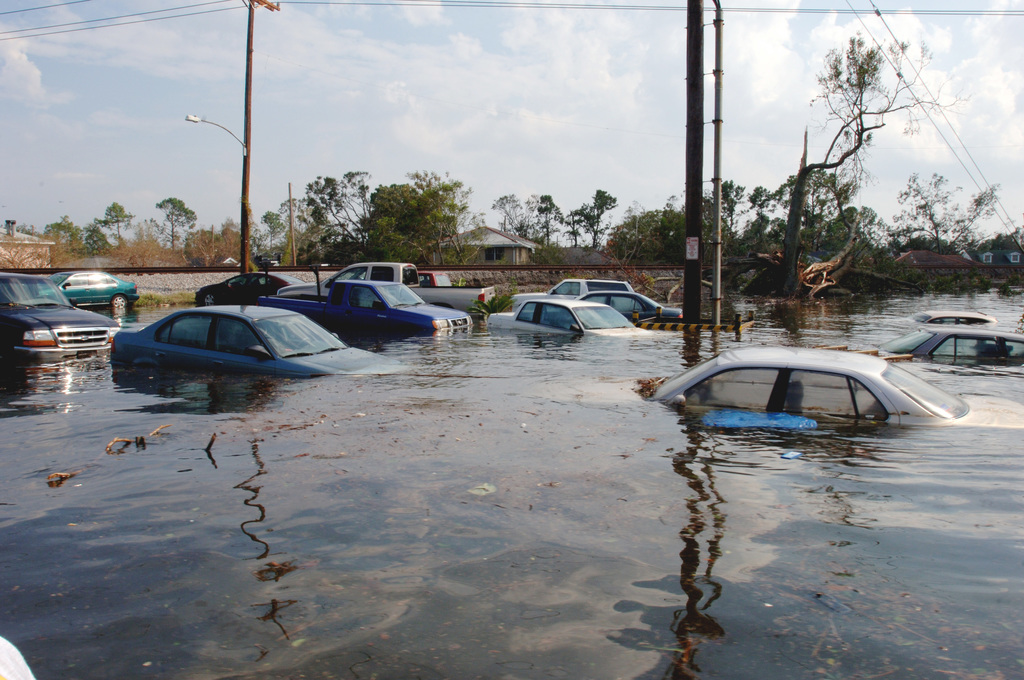
You truly are trapped…or are you?
There’s a four-step process here that you’re going to want to follow. SCWO stands for Seat belt, Children, Window, Out and it will be what keeps you alive.
Get Out of the Seatbelt!
You’re not much good to anybody if you’re dead. The very first thing you need to do is to get out of that seat belt. Getting out of that seat belt is what lets you save others.
If you can’t get the seatbelt unfastened, a seat belt cutter is (sometimes literally) a lifesaver. Keep one on your key ring.
-
25% off all OAKLEY products - OAKLEY25
Copied! Visit Merchant
They’re also on many glass breakers, which we’ll talk about more in a second.
Knives, while generally able to cut through a seat belt if you’ve kept them sharp, come with the risk of cutting yourself or the person you’re trying to rescue. So, a seatbelt cutter is preferable to avoid any extra injury.
Prep the window
If you don’t already have the window rolled down, you’ll need to break it. This is where a good-quality glass breaker comes in.
One of the main traits that you’re looking for with a glass breaker is convenience. You need something that’s going to be as easy to access once you need it as possible.
-
25% off all OAKLEY products - OAKLEY25
Copied! Visit Merchant
Just a few of the options out there include keychains, tactical pens, and good ol’ fashioned glass-breaking hammers.
Save the Kids
If there are kids in the car, they are your next priority.
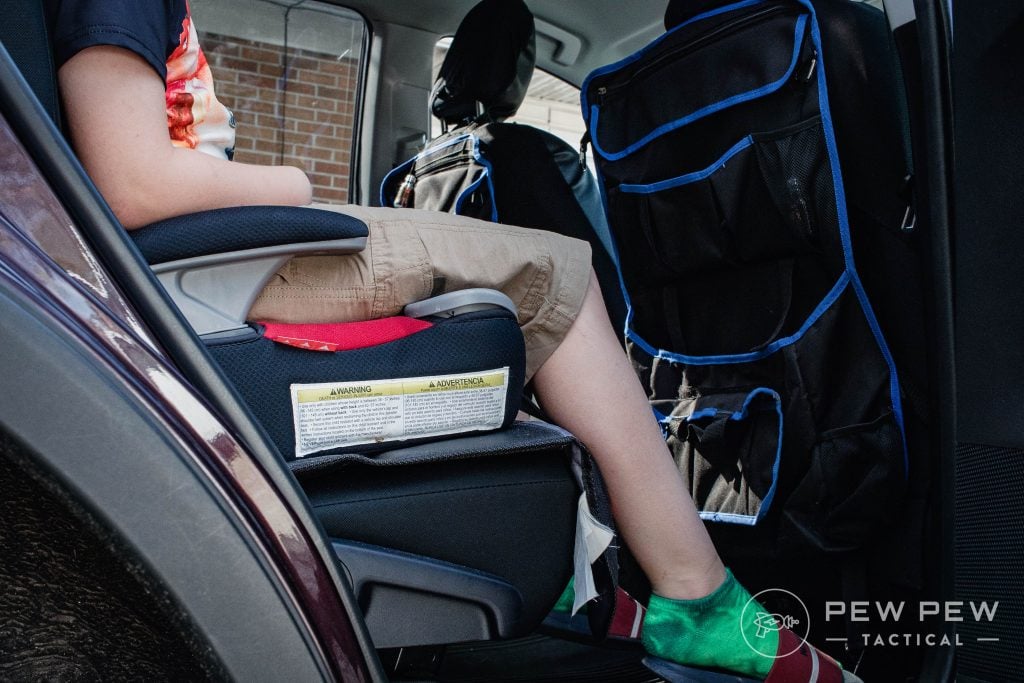
Crawl into the back, unbuckle them, and pull them all up to where you’re going to escape out the window.
Get Out
Now comes the fun part. Get out that window and get to dry land with everybody.
Piece of cake, right?
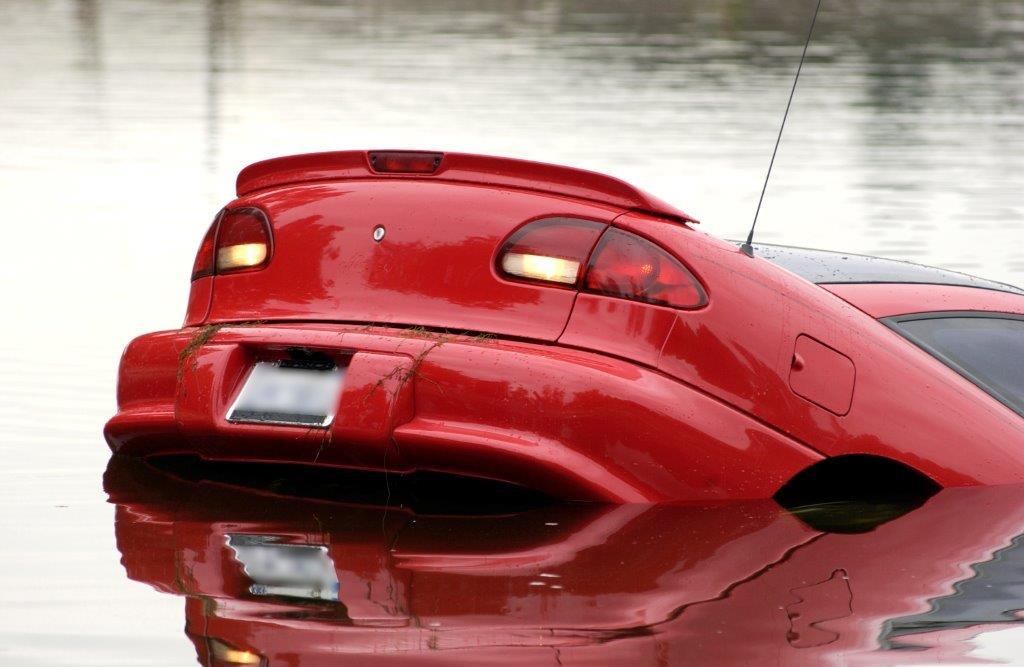
If you don’t have a glass breaker or weren’t able to get your windows down before the car filled up, you may have to wait until water fills the car to make the escape.
After the floating period, the pressure equalizes from the inside and outside of the door, meaning you can now push it open without much of a problem.
To see this in practice, check out the video below from The Weather Channel.
Surviving the Aftermath of a Flood
The first thing you need to do is to alert somebody of what’s going on. Your phone or email are going to be your first lines of defense here, but power outages often accompany flooding. So this may not be an option.
Ham radio would make an excellent option, but if that doesn’t work, you need some other signal you can make.
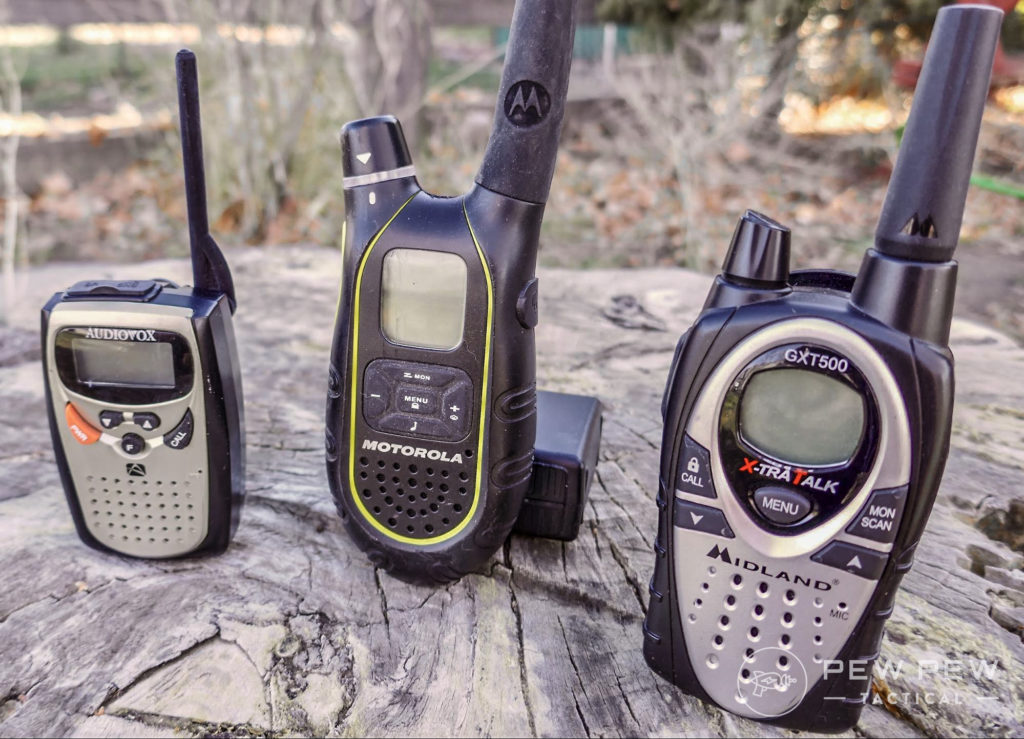
If you can safely get on the roof when you see helicopters overhead, you may be able to wave one down.
Any roofer worth his salt can tell you that hanging out on a roof is a miserable experience, though, so don’t do that unless you absolutely have to.
Though getting into the water may seem like the thing to do…don’t do it. You don’t know what’s in that water, and the threat of an unseen downed power line electrocuting you to death is a very real possibility.

Disease transmission is a very real threat post-flood as well.
Don’t forget that all of the sewers and toilets in your area are going to be mixing with that flood water as well, and that can make it very easy to get a nasty bug.
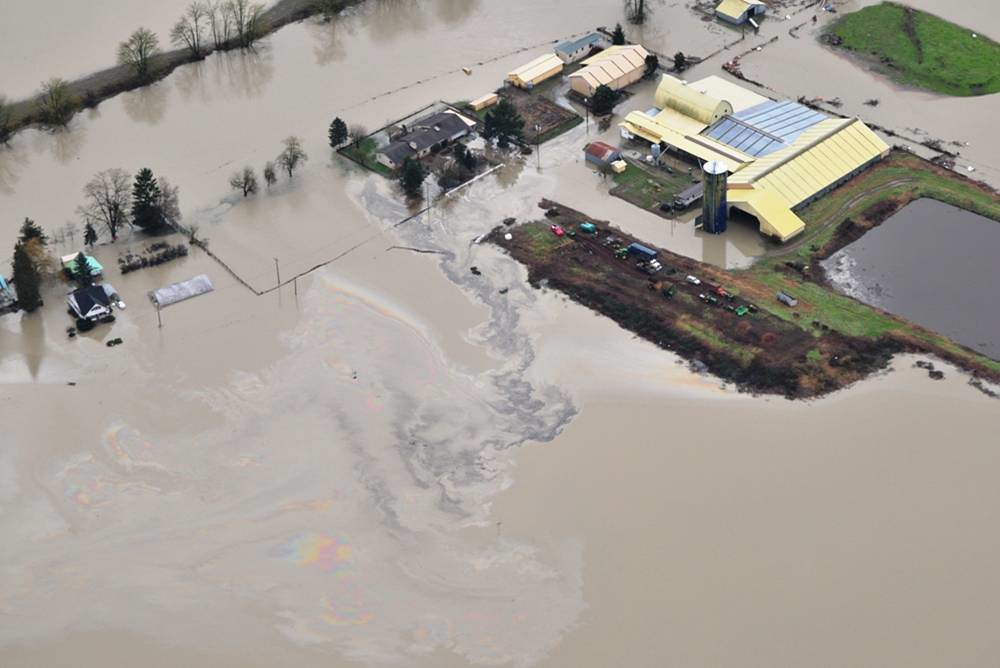
Final Thoughts
While perhaps not as intimidating as other natural disasters, floods’ prevalence means that knowing how to survive one is a vital skill set.
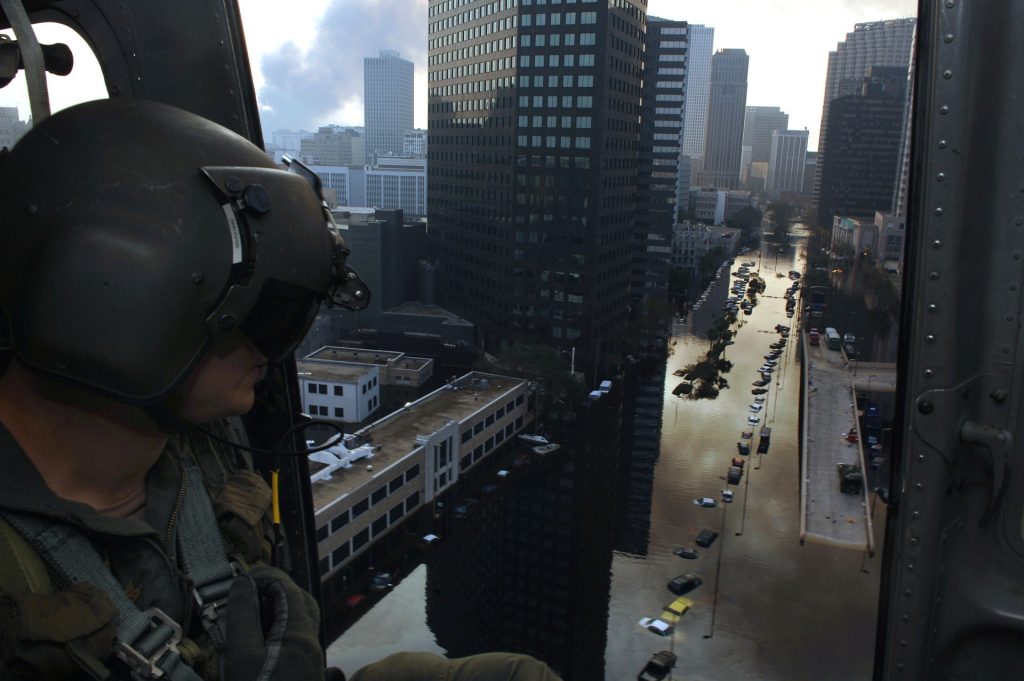
By following everything you’ve read above, you’ll greatly improve your chances of making it through one alive.
Have you ever had to put any of the above to the test? Are there other tips we didn’t include you feel we should? Let us know in the comments below! To prep more, check out our Survival & Prepping category!

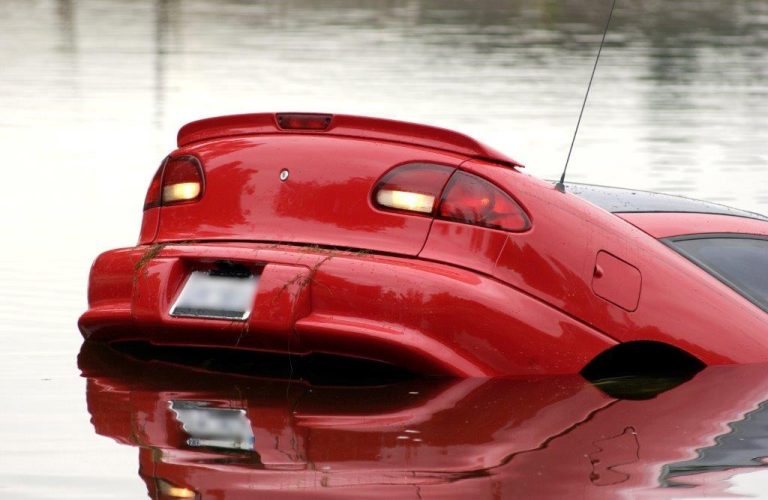











1 Leave a Reply
Gotta wonder sometimes what the state of a persons common sense and mental health is then they thought "Ten feet of rapidly moving water, its a flood, but I'll drive my car through it anyway."